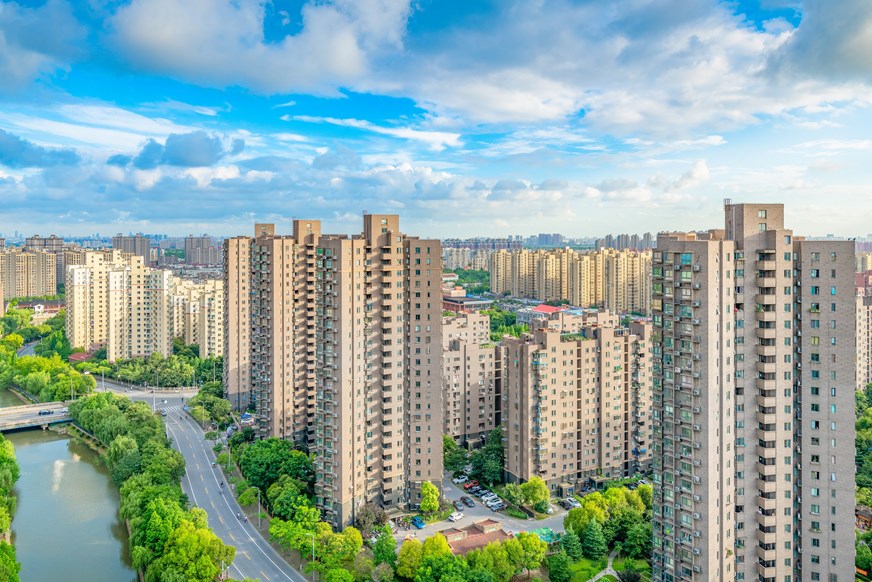
Search our articles
China’s Property Sector Correction Weighs on Growth

Key Insights:
- What happened: China embarked on deleveraging reforms in the property sector in 2021, causing a free fall in residential home prices that acted as a major drag on growth in the next few years. In January, one of China’s largest property developers, Evergrande, was issued a liquidation order by a Hong Kong court.
- Why it matters: With as much as 70% of household wealth tied to property values, the future of the sector bears on consumer confidence and China’s ability to accelerate growth. Further structural economic reforms are needed to ensure healthier and more sustainable growth.
- What happens next: Additional reforms face considerable implementation headwinds, impacting China’s growth trajectory in the coming years. Fiscal constraints in particular may limit the ability of policymakers to see through reforms.
ANALYSIS
In 2021, China embarked on reforms to the property sector, including Three Red Lines policy with caps on the amount of debt over-leveraged developers could hold. Cognizant of the need for more healthy and balanced growth, the policy heralded two years of a deep property market correction. During this time, several developers went underwater as they could no longer service old debt with new debt, notably Evergrande.
However, the free fall in the real estate sector and resulting growth and fiscal implications have prompted policymakers to introduce mitigating measures. Those include easing debt caps on property development and implement purchase incentives last year, and more loan support to a list of 50 identified developers this year.
While these measures do not represent a reversal of Beijing’s agenda for the property sector, policy corrections underscore the costs of large scale and comprehensive reforms. The expectation is to moderate the effects of a necessary correction in the property sector over the next few years, as the central government ensures funding for select developers without reviving the capital-fueled growth seen to have led to present challenges.
Moving forward, property sector correction is one of the key variables bearing on China’s future economic growth worth watching. Another is the implementation of additional reforms to unlock consumption and growth, including:
- labor and social welfare reforms, such as the removal of hukou restrictions for migrant workers in major cities, raising the retirement age, and strengthening unemployment, insurance, and pension benefits
- financial liberalization, specifically the expansion of financial market access for households, the removal of capital controls and interest rate deregulation
- fiscal reforms to address local government financing, distribution of fiscal revenue, and restructuring of existing local government financing vehicles (LGFVs)
SPOTLIGHT: HUKOU SYSTEM REFORM
The hukou policy in particular has attracted considerable attention. In its current form, it excludes rural migrants, or a third of the working population, from social benefits in cities where they work. Migrant worker savings are, on average, 5-7 percentage points higher than those with urban hukou, as they are compelled to save for big-ticket expenses such as education and healthcare. Unlocking those savings is seen as an avenue towards boosting consumption.
Since 2014, the central government has sought to overhaul the hukou system including, e.g., by increasing migrant child enrolment in urban schools. Calls for broader hukou reform from Beijing have gotten stronger over the years: in 2021, the National Development Reform Council called on all cities with populations under 3 million to remove hukou restrictions. However, implementation at the local level remains a question, with potential constraints on local fiscal capacity to absorb additional benefits for migrant workers.

Written by Onyx Strategic Insights

